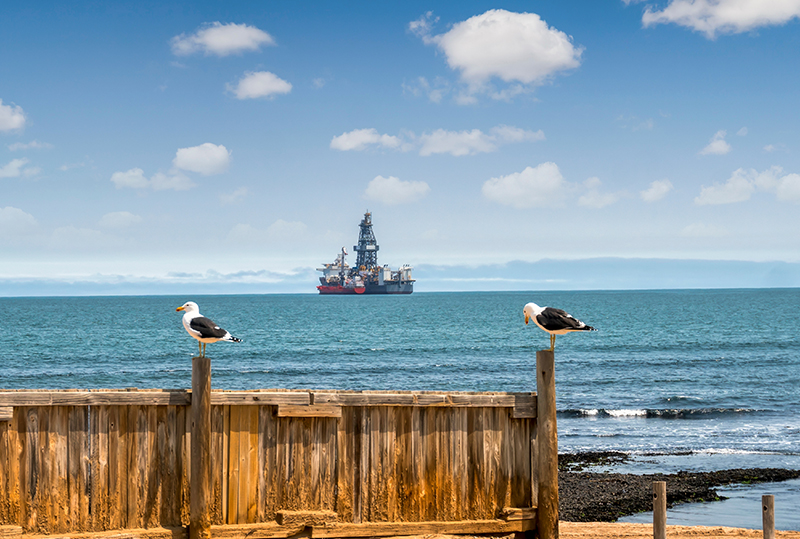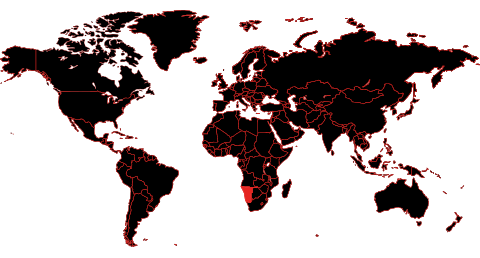NamPort’s $2 Billion Expansion: Laying the Foundation for Namibia’s Oil Boom
The arrival of oil changes everything.
It’s not just about the drilling, the discoveries, or the billion-dollar deals between governments and oil giants. It’s about logistics, transportation, and how quickly a country can move from extracting resources to delivering them to the global market.
Namibia is at that inflection point.
With the Jonker, Mopane, and Venus oil discoveries proving the immense potential of the Orange Basin, one thing has become clear—Namibia’s port infrastructure needs a serious upgrade.
And that’s exactly what’s happening.
In 2023, NamPort (Namibia Ports Authority) announced a $2 billion investment plan to expand and modernize Walvis Bay’s port, positioning it as the key logistics hub for Namibia’s oil and gas future.
Why Namibia’s Oil Industry Depends on Its Ports
There’s a reason why every major oil-producing country has world-class port infrastructure. Oil is only as valuable as your ability to move it efficiently.
Without deepwater berths, proper storage, and seamless export facilities, a country’s oil industry remains bottlenecked—no matter how much oil is in the ground.
Walvis Bay, Namibia’s main port, was never designed to handle the scale of oil and gas operations that are now on the horizon.
• The existing infrastructure supports trade and container shipping but is not optimized for large-scale crude oil exports.
• The new discoveries require specialized offshore supply bases, drilling equipment logistics, and export terminals.
• International investors will not commit billions in oil production unless they see clear infrastructure development to support exports.
This is why NamPort’s expansion is not just an improvement—it’s a necessity.
What the $2 Billion Expansion Includes
NamPort’s expansion plan is not just about adding space—it’s about transforming Walvis Bay into an energy hub for Southern Africa.
The key projects include:
A. New Deepwater Oil and Gas Berths
• Designed to accommodate oil tankers and offshore supply vessels.
• Allows Namibia to export crude directly without reliance on foreign refineries or third-party ports.
• Positions Walvis Bay as a potential regional oil storage and trading hub.
B. Expanded Quay Walls and Cargo Handling Facilities
• Essential for moving drilling equipment, offshore supplies, and machinery efficiently.
• Helps streamline Namibia’s growing role in the oilfield services sector.
C. Storage and Refining Infrastructure
• Plans for new crude oil storage facilities ensure that Namibia can hold reserves before export.
• Discussions around a potential oil refinery are gaining momentum.
This expansion is not just for Namibia’s benefit—it puts the country in a position to serve as an oil logistics center for neighboring countries like Angola, Botswana, and South Africa.
How This Transforms Namibia’s Economy
Infrastructure projects of this scale create long-term economic benefits that go far beyond oil.
A. Job Creation in the Short and Long Term
• The construction phase alone will generate thousands of direct and indirect jobs.
• Once operational, the expanded port will require skilled engineers, logistics specialists, and maritime workers.
B. Attracting More Foreign Investment
• Oil majors are more likely to invest in Namibia if they see infrastructure commitments.
• A well-developed port system means logistics costs decrease, making Namibia’s oil more competitive.
C. Diversifying Namibia’s Economy
• The oil boom could easily become a single-industry economy trap—but port expansion allows Namibia to become a broader energy and logistics powerhouse.
Lessons from Other Oil Nations
Infrastructure misalignment has crippled oil industries before. Namibia cannot afford to make the same mistakes.
• Angola took years to develop proper ports and lost billions in potential revenue due to bottlenecks.
• Nigeria’s poor logistics networks continue to be a challenge, leading to frequent export delays.
• Ghana’s oil boom benefited from proactive port expansions, making it a key player in West Africa.
Namibia is learning from these examples and building infrastructure ahead of production, not after.
Oil discoveries create opportunities, but infrastructure secures wealth.
Namibia’s decision to invest heavily in port development now shows a level of long-term thinking that many oil-rich countries failed to have in their early years.
This is more than just an upgrade—it is a strategic move that ensures Namibia’s oil boom translates into real economic power.
The groundwork is being laid. What happens next will define Namibia’s place in the global energy market.
Key sources:
•Event Reference: NamPort’s investment in Walvis Bay expansion was officially announced in May 2023.
•NamPort Press Conference (May 2023) – Namibia Invests $2 Billion in Energy Logistics Hub
•Ministry of Works & Transport Report (May 2023) – Enhancing Namibia’s Port Infrastructure for Oil & Gas
•The Namibian (May 2023) – How Walvis Bay is Preparing for Oil Exports
Earth Day 2025 – Our Power, Our Planet
“Our Power, Our Planet” — the theme of Earth Day 2025 — is not just a rallying cry for envir
Positioning Namibia’s Youth at the Center of Its Energy Future
Namibia stands at a pivotal moment in its national development, faced simultaneously with a signific
What Every Namibian Student and Entry-Level Professional Should Know About the Upstream Oil & Gas Sector
The upstream oil and gas industry in Namibia is no longer a theoretical possibility—it is a rapidl




